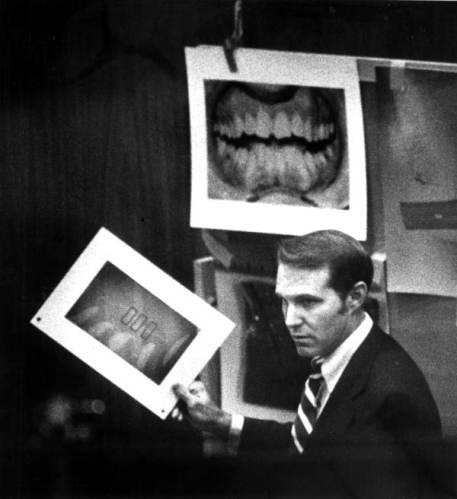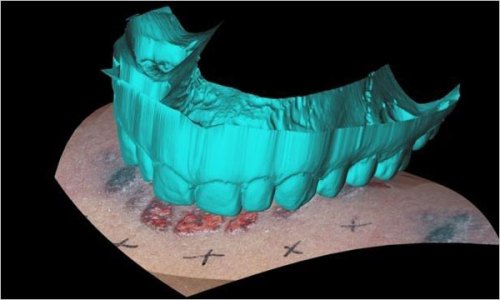The forensic examination of bite marks left on victims, both alive and deceased, is being brought into question. If someone has an unusual tooth pattern and leaves bite marks on a victim, it seems logical that a match between the tooth pattern and the bite mark pattern would indicate that this person was the one who did the biting. And that just might be the case.
The poster boy for serial killers, Ted Bundy, had an unusual dental pattern and was convicted in part on bite mark evidence. No doubt old Ted was guilty but was the bite mark evidence used against him reliable?
It comes down to exactly how accurate these comparisons are?
It mostly depends on the “quality and clarity” of the bite mark and the skill, experience, and attention to detail of the observer. The key being that it varies from case to case and from examiner to examiner. Forensic science doesn’t like such unpredictable variability. In general, such variability means that either the technique is not useful or accurate, or the protocols for making the comparison are inexact. Time will tell, but a couple of upcoming court rulings could derail the entire process. We shall see.




























Cheryl B. Dale
June 27, 2013 at 3:51 pm
Thanks for the info!
LikeLike
Rhonda Hopkins
June 27, 2013 at 5:49 pm
Many years ago, I was working an investigation of child abuse. There were a lot of bite marks on the girl. To be honest, I didn’t really suspect the abuser. We had all the family members go in for forensic testing. The results were definitely conclusive in regards to the step-mother. And once the results were in, she broke down and confessed. So they were definitely helpful in our case.
LikeLike
Wally Lind
June 28, 2013 at 6:42 am
It’s beginning to look a little too iffy, Doc, as evidence that make a case a slam dunk, like fingerprints. But it doesn’t have to be. If it’s just part of the picture, it should be admissible as such.
LikeLike
D.P. Lyle, MD
June 28, 2013 at 6:57 am
Wally–I agree. I think the technique is real and useful but it depends on the clarity of the mark, the quality and experience of the examiner, and a few other things. I fear it will be tossed aside by a court because of a few sub-par examiners. Sort of tossing the baby with the bathwater.
LikeLike
Polly Iyer
June 28, 2013 at 9:29 am
Ray Krone, who spent 10 years in prison on a murder charge, 3 on death row, was convicted on bite marks by an “expert” who was paid something like $50,000 to testify. He was released when DNA nailed someone else. I wouldn’t want bite marks to be the determining factor in a man’s life.
LikeLike
A. Michael Schwarz
July 1, 2013 at 11:44 am
If forensics are backed up by other facts they can be effective, but if all other facts so “no” and your bite marks say “yes,” you’re treading dangerous ground. Courts seem to be a little overboard on the whole “expert opinion” thing and forensic evidence is often subject to serious lacks.
LikeLike